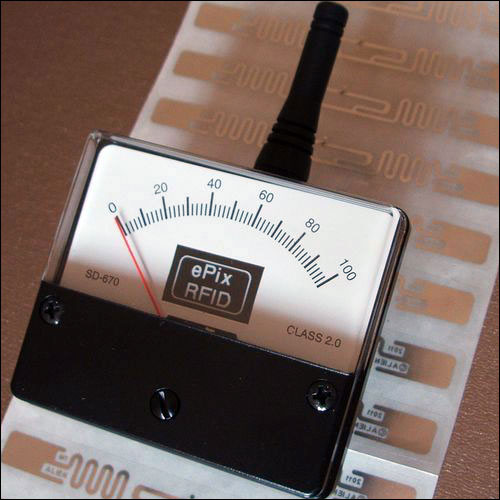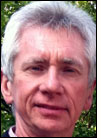British electronics firm ePix Ltd. is selling a handheld device that a user can operate in order to ascertain the level of RF transmission from a reader before, during or after the installation of a radio frequency identification system. In that way, the operator can determine not only whether tags can be read, but how strong the RF signal is at any location in the vicinity of that reader.
Dave Mapleston, ePix’s founder, envisioned and then built the device, the Power Mapper, while teaching an RFID course at the University of Cambridge, approximately three years ago. “I could only explain the theory of RFID radio wave propagation,” he says, rather than demonstrate any theory to the students by showing them where RFID waves were or were not transmitted. “Teaching RFID is not easy, and becomes very complex when the radio waves are enclosed in small spaces,” he explains. “Radio waves aren’t as simple as people think.” Mapleston wanted to demonstrate the waves’ behaviors to his students, rather than simply describe them.
To that end, Mapleston tried utilizing existing technologies, such as LED meters, but was dissatisfied since they can detect the presence of an RF wave but not indicate signal quality. He says he created the Power Mapper “after some research into precise antenna matching and small radio-integrated detector circuits,” which he used to build his solution.
According to Mapleston, RF waves are polarized, meaning they are oriented in certain directions, and are emitted from a reader in “thin strips.” The tags will receive power, instructions and data from the RF signals in these strips, within about 20 feet of an interrogator’s antenna. However, he notes, an RF field’s strength can be affected by a large presence of metal, as well as the reader antenna’s angle and the distance involved. Interference nulls (dead spots) appear between those strips, through which RF signals do not travel, thereby leading to an inability to read a tag in certain positions. What’s more, he says, to achieve the greatest read range, the polarization of the tag’s antenna should match that of the reader’s signal.
To minimize the presence of any such nulls in an interrogator’s transmission, users typically learn the best arrangement of RFID readers and antennas through trial and error. If tags cannot be read at particular locations, users simply adjust the reader antenna and try again. “It’s guesswork,” Mapleston says. “They don’t know if they are reading a tag well or poorly.”The Power Mapper solution, Mapleston says, provides a user with greater knowledge regarding where transmissions may be weak or nonexistent due to a null area. The device captures any ultrahigh-frequency (UHF) RF signals emitted by a reader antenna, and measures that radiated power, providing the results on its display. It operates with linear-, circular- and cross-polarized reader antennas, enabling a user to map an RFID reader’s field pattern from a distance of up to 15 meters (49 feet). Linear-polarized antennas consist of a single line, thereby producing an RF signal with an electric field oriented in a single plane that can be vertical or horizontal. Circularly polarized antennas are folded dipoles bent into a circle, producing an electric field more consistent across either horizontal or vertical positioning. Cross-polarized antennas, which serve as an alternative to circularly polarized versions, consist of a vertical and a horizontal antenna crossed over each other.
The Power Mapper uses no battery, but is powered simply by a reader’s RF transmission. It is small enough to fit into a pocket, Mapleston says, and operates with all known European and U.S. UHF RFID interrogators.
To operate the Power Mapper, a user can simply hold the device between a finger and thumb, moving it slowly around the area of interest. The system measures microamperes (uA) on a scale of 0 to 100. By rotating the meter by 90 degrees from a vertical position, the operator can also measure power in the horizontal polarization plane. An oscilloscope can be connected across the Power Mapper’s data-out terminals, in order to display the signal-modulation level.
EPix offers the solution to customers throughout Europe, and intends to sell it in North America as well—at a cost of $195, plus $20 for shipping—via RFID Journal’s RFID Connect Web site. Current end users of the product include a broad range of companies, Mapleton says. “Any industry you can think of—distribution centers, shops, anywhere RFID is used,” he says—can gain from employing the device to measure UHF RF quality around their readers.
“People have been surprised just how non-uniform their RF field is,” Mapleston says. Most of Power Mapper’s existing end-users learned about the product while attending an Alien Technology RFID Academy class to increase their knowledge of RFID prior to installing the technology. Launched in 2002, Alien’s RFID Academy offers a variety of courses in North America, Europe, Australia and the Asia/Pacific region, and has graduated more than 3,000 individuals to date, representing more than 1,500 companies.



